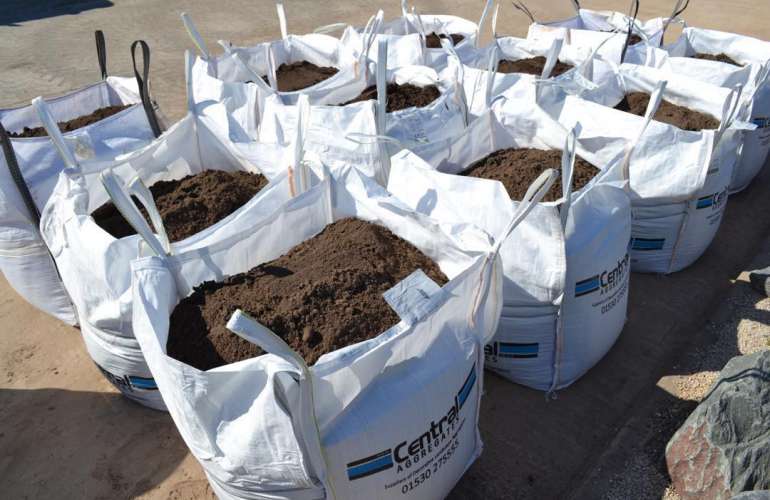How much a cubic yard of topsoil weighs can actually vary depending on how much of what is in the soil and the moisture content it contains. Bags of topsoil are usually sold by cubic feet and sometimes contains small amounts of added fertilizer to make it better for use in gardens.
Topsoil is essentially the result of scraping the top 4″-12″ or so of the top of the soil off of an area of land, though most of the time it stays in the 5″-6″ range.
When topsoil is not sold in bags the next way it is sold is in cubic yards. One cubic yard is a cube that is one yard in each direction, making it one yard high, one yard wide, and one yard long. A 40-pound bag usually contains approximately 0.75 cubic feet of soil.
One cubic yard is made up of 27 cubic square feet, so if buying in bags, you would need 36 bags weighing 40 pounds each and making for a total of 1,440 pounds of soil per cubic yard.
Knowing how much one yard of topsoil weighs partially depends on where it was scraped from and, therefore, what it is in it. If it contains a more than usual amount of sand or stones this will make it weigh considerably more, on the other hand, if it has a lot of small wood chips and plant debris it can weigh less.
Usually, when you need a cubic yard or more of topsoil, it is best to buy it in bulk instead of buying the appropriate number of bags.
How Many Cubic Yards of Topsoil Will I Need
Estimating how much topsoil you will need for a project is easiest to do when thinking in terms of cubes. For example, how deep you need it, how wide of an area do you need it, and how long is the space you need to cover.
Put all those measurements into feet for the simplest math, making a 6″ deep garden bed become 0.5′ deep. Once you have everything in feet, you multiply the three dimensions to get the cubic feet you will need.
For example, If you are making a 4’x5′ raised garden bed that needs to be 0.5′ deep, then you will need ten cubic feet of topsoil for it since 4’x5’x0.5’= 10 cubic feet. You can use this same math no matter what you are using your topsoil for as long as you know the depth, width, and length. Remember that 27 cubic feet go into one cubic yard.
How to Get the Cubic Yards of Topsoil to Your Home and Where You Need It

When buying a cubic yard of topsoil or more from a supplier, there are two routes you can go to get the soil to your home: you can have it delivered, or you can have it put in the back of your truck or trailer and take it home yourself. If you are going with the later plan, then you need to make sure how much weight your truck can handle before you attempt to take a load.
A truck or trailer can usually handle around one or two cubic yards of soil, depending on whether the truck is small or full-sized. To do this, you will have to drive there and place your truck where they tell you, paying inside and then driving it home.
A small dump truck, on the other hand, can carry five cubic yards while a large dump truck can sometimes carry over ten cubic yards. To have this done you can usually make an order on the phone, and they will let you know their schedule and when they can deliver.
However you get it to your home, try to get it dumped as close to where you will be using it as possible. The average size wheelbarrow can carry around three cubic feet, but whether you can move it when weighing about 120 pounds might be another matter. Even then it will take at least nine trips to move one cubit yard of topsoil.
Uses for Topsoil Around Your Home
Gardening is one of the most common uses for topsoil since it naturally has a fair amount of nutrients to give garden plants a good start, but there are a few other uses too.
It can be also perfect for increasing drainage if you have a part of your yard that is not draining properly. Sandy soil, in particular, helps with drainage and for best results is tilled into the soil up to a foot deep.
Another thing that topsoil can be good for is to help level your lawn. Do this by sprinkling a couple of inches at a time over low areas, allowing the grass to grow through without smothering it and doing a few applications over a few weeks if it is really low.
- Using Borax in the Dishwasher - May 27, 2020
- Towel Ring Height and Other Fixtures: Proper Measurements - May 1, 2020
- Homemade Paint Removers for Every Surface - April 27, 2020
